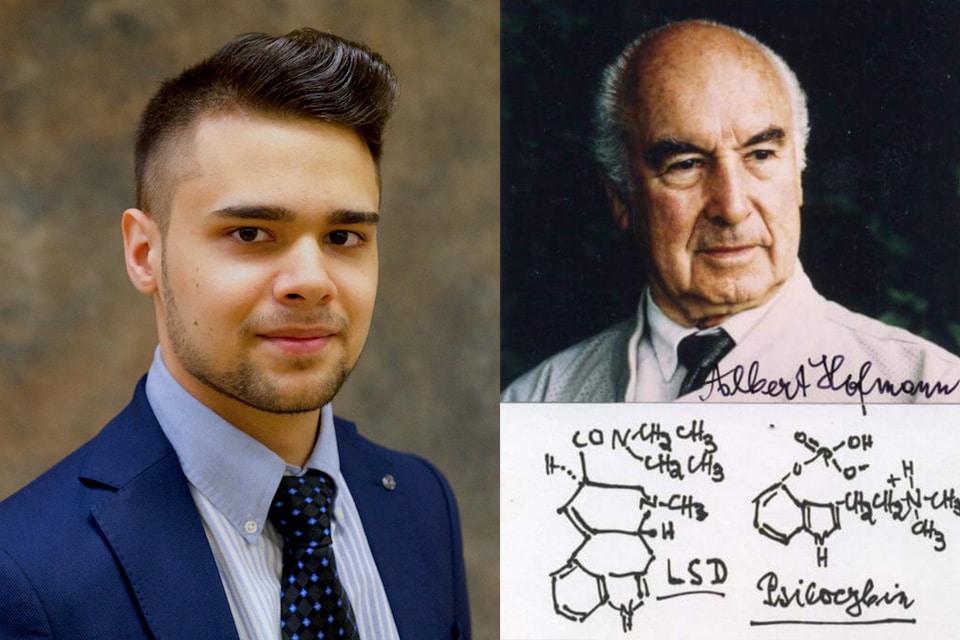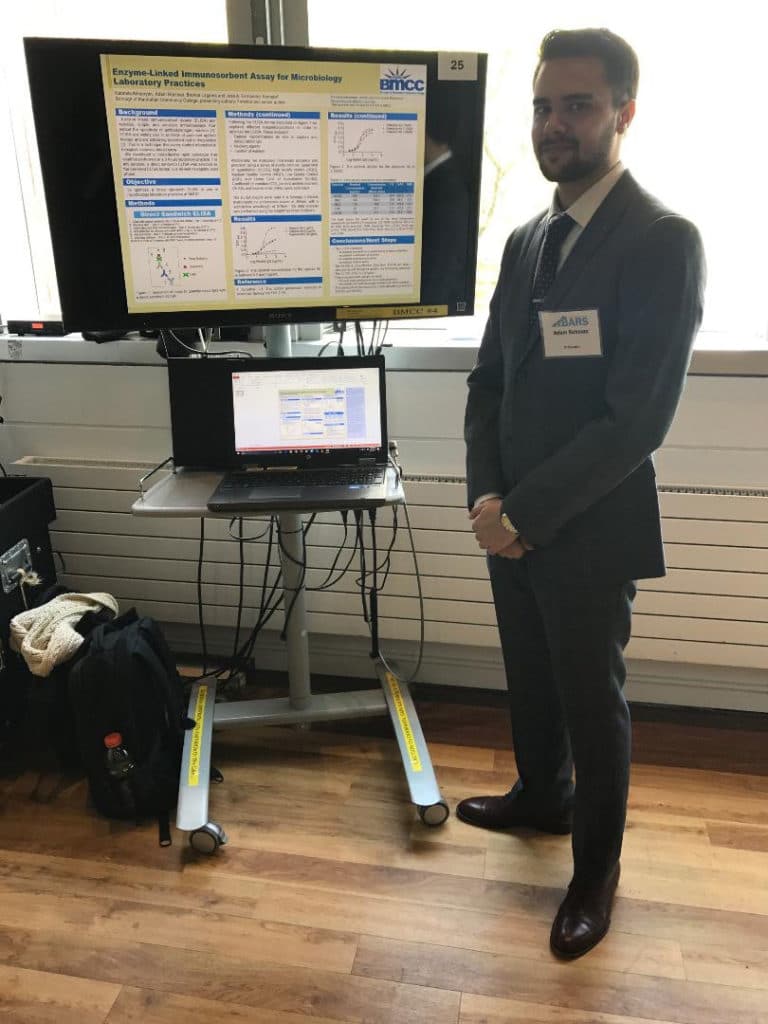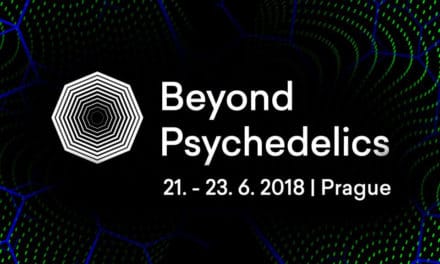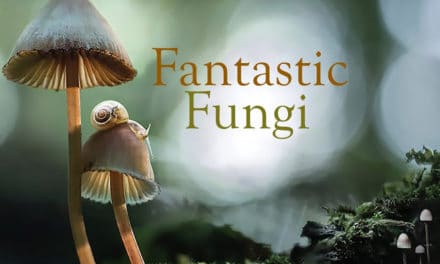This year on April 19, Adam Rahman of Fairfax, VA is commemorating 76 years to the day that Albert Hofmann first tested 250 micrograms of LSD on himself. Hofmann rode his bicycle home from his laboratory in Basel, Switzerland, before embarking on a frightening psychedelic trip.
Rahman first used LSD at age 16. “Or supposedly it was LSD,” he confessed to Psychedelic Times. “Most likely it was some analogue that’s probably toxic. That was my first psychedelic and it was actually around Bicycle Day in April.”
Rahman’s first LSD experience kicked off a trip that today has brought him hundreds of miles from his home in New York to George Mason University, where he is working towards his bachelor’s degree in neuroscience with a pre-health concentration. “Since that day I’ve been absolutely captivated by psychedelics, especially LSD and its analogues,” he said.
“Hofmann contributed, in my opinion, one of the best compounds for accessing the human collective unconscious,” Rahman said. “He described LSD as a tool to help you discover who you truly are.”
At the time of Rahman’s first LSD trip, he was struggling with a tumultuous family life at home and his poor performance in school. “I didn’t know where I was going; I didn’t know anything about myself,” he recounted. “I was facing homelessness around then and I eventually did become homeless.”
Rahman took a 150 microgram tab of LSD in his friend’s basement. Until then he had never experimented with any substance heavier than cannabis.
“Once the drug kicked in, I felt this overwhelming sense of emotion. I felt a lot of love—for myself, others, even inanimate objects. It went deeper into my intuition and I started to unravel a lot of things that were holding me back from pursuing what I wanted to. That’s when the ego dissolution happened.”
Rahman breaks with the more common terminology ‘ego death’—because the ego always comes back. This next stage of the trip was very challenging, marked by strong hallucinations and a feeling of dissociation.
“But that challenge was what I needed,” Rahman said. “It allowed me to see myself from a third-person lens, in an objective and subjective fashion. I saw how I could better mitigate my life and my circumstances.” This was the moment that forever changed his life and sparked his fascination in psychedelics.
Rahman studied psychology, and read some of Hofmann’s work as well as the work of Carl Jung. He explored other psychedelics and their analogues, mesmerized by psychedelic culture and the history of the counterculture movement.
“This drug gave me the backbone and confidence to start to look at myself and fix myself,” Rahman said. “I examined my Jungian archetypes and realigned and tuned them under this compound through integration work such as writing and reading. This is what made me who I am today.”
Years later, Rahman has started on the long career path towards psychedelic research. “Right now I’m an undergraduate student,” he said, “so I’m at the lowest level in the ‘priesthood’ of science. I have to throw myself into whatever research project is open to me.” He is also a chapter leader at his school’s chapter of Students for Sensible Drug Policy.
When Rahman finishes his bachelor’s, he plans to pursue graduate and medical school. He hopes to better understand the serotonin receptor, and to work towards isolating and testing different psychedelic compounds. Through this research, he suggests he may discover safer analogues to LSD and psilocybin, the active component of ‘magic mushrooms.’
We spoke further about his concerns with psychedelics and the urgent need for more research. Rahman stressed that he is not an expert in psychedelics (yet!), and that much of his understanding comes from his personal study and anecdotal experience.
Why are you concerned about the LSD molecule specifically as used medicinally?
LSD reacts with many different receptors, including the 5HT-2B receptor. This is found in many places including in the heart valve. Some research suggests that cardiovascular problems may develop through repeated medicinal use because the drug may weaken the valve. This really concerns me and I want to study it further. There isn’t much evidence to back this claim, but if true it would pose a problem with LSD. It would also be a risk with psilocybin and psilocin, which both bind to this receptor. But LSD reacts with the -2B receptor much more strongly.
How do LSD and psilocybin react differently in our bodies and minds?
Psilocybin is very similar to LSD from a pharmacokinetic and biochemical standpoint. But besides their differing molecular structures, the biggest distinction between them is that one is natural and one is lab-made. I personally don’t consider that—a compound is a compound, a molecule is a molecule. However I do think their actions are more than just mechanical—there is spiritual and collective significance behind every compound.
LSD leaves people in a very child-like state because of its strong ego dissolutive properties. That can very well serve people with egocentric, egomaniacal, or tyrannical behaviors.
It makes LSD a great tool for self-development, one that helps you tap into your intuition and the collective. The message behind LSD is, ‘Please tap into your humanness. We are all one.’ It’s a call to be less destructive towards yourself and others, and to have the capacity to show love. It’s a chance to realign your ‘ego,’ your ‘persona,’ and your ‘shadow’ (in Jungian terms.)
The psilocybin experience is more ‘universal,’ where you have this knowledge downloaded into your head that is so far beyond you that you don’t even know what to do with it.
How do we start to understand the effects of something like mushrooms—which contain several psychoactive compounds—or even cannabis, which contains hundreds?
In a clinical setting, you would formulate a bioassay and isolate certain compounds. You test it on multiple people in a controlled setting with a placebo. You study the compound’s effects and its pharmacokinetics.
For example, baeocystin is a psilocybin analogue found in mushrooms. Baeocystin in its simplest form is essentially an orally active NMT, whereas psilocybin is an orally active DMT. DMT is a naturally occurring psychedelic and the active component of ayahuasca. NMT is enigmatic; there’s anecdotal evidence that NMT is far more intense than DMT. The best way to test it would be to isolate it from a psilocybin mushroom.
What path forward do you see for yourself in this field?
I can’t lead any research on this until I finish my education. You have to be patient in medical research and you have to respect the hierarchy. This field is already very controversial and stigmatized. You need to make sure you’re a very good scientist on paper or you won’t get access to laboratories to do this research.
If anyone is interested in pursuing this, don’t think twice about it. Find like-minded people and go for it. Isolate these analogues and do more clinical tests on them. Don’t take a biased stance—if it’s good it’s good, if it works it works, and if it doesn’t, it doesn’t. I’m a big believer that medicalization will lead to decriminalization and then to legalization.
What is your message to our audience on this Bicycle Day?
I hope everyone enjoys their Bicycle Day. Please test your substances; you never know what you have in that little blotter tab of yours. There are certain analogues of LSD that are quite toxic and can kill you. Just play it safe, and have fun!












